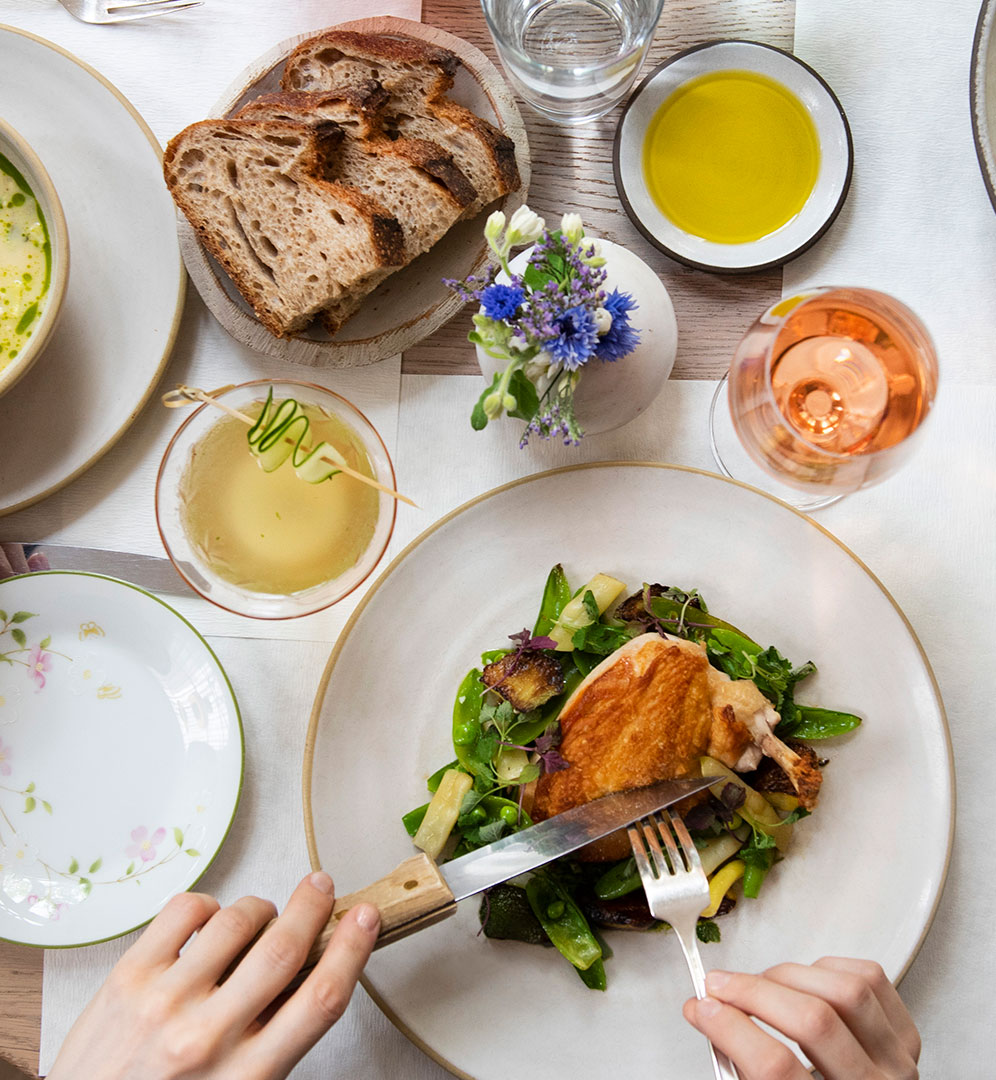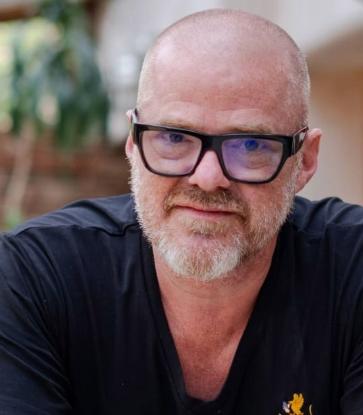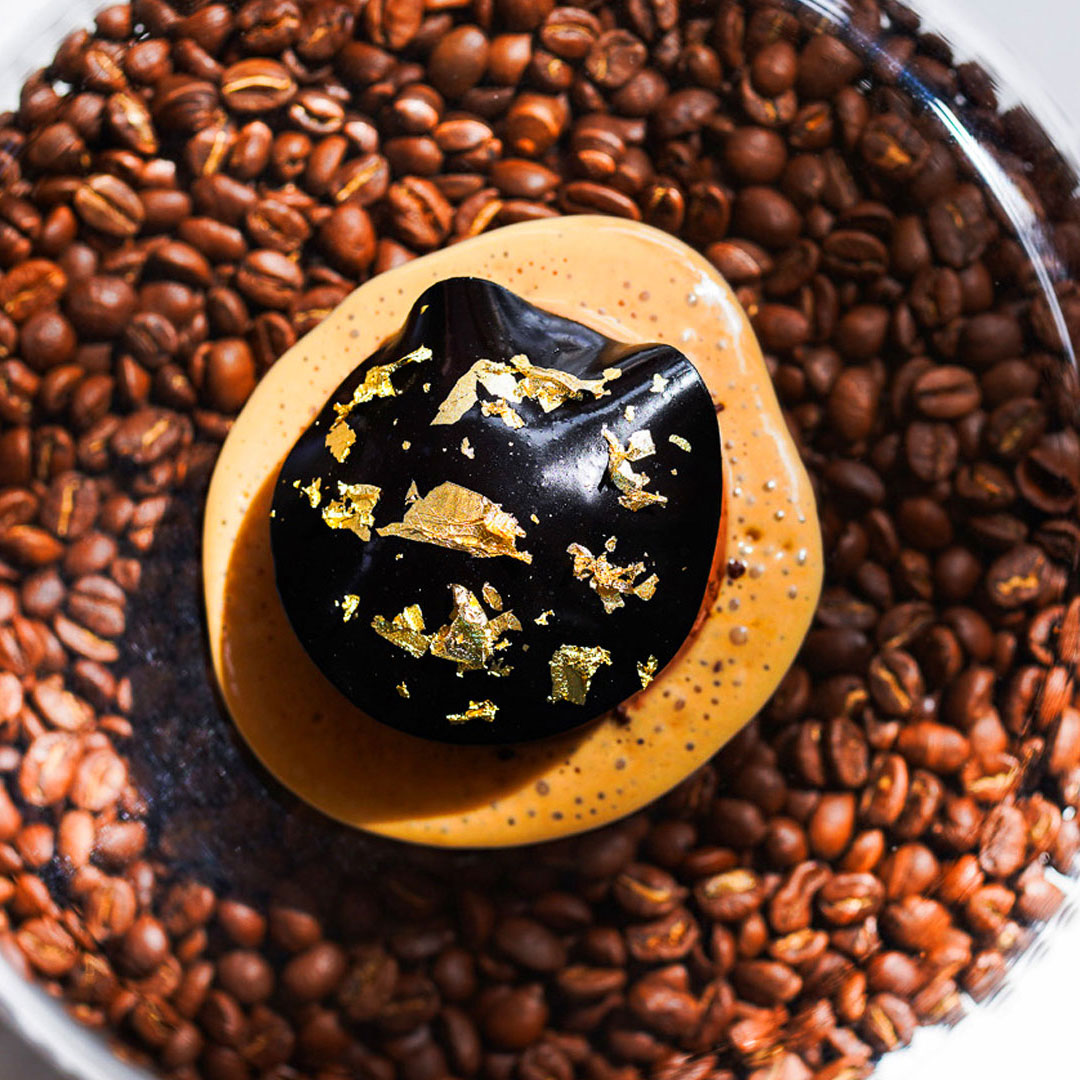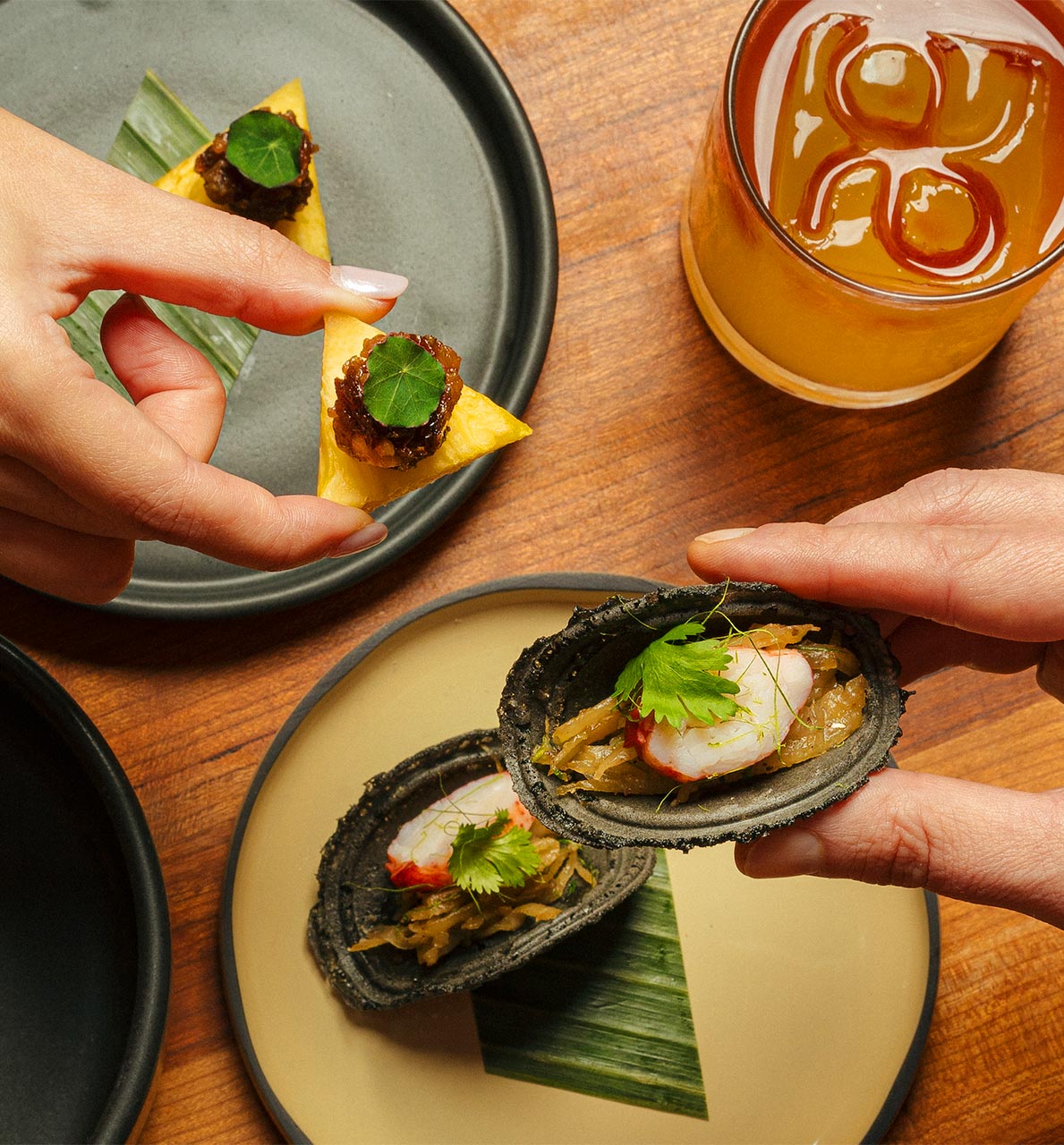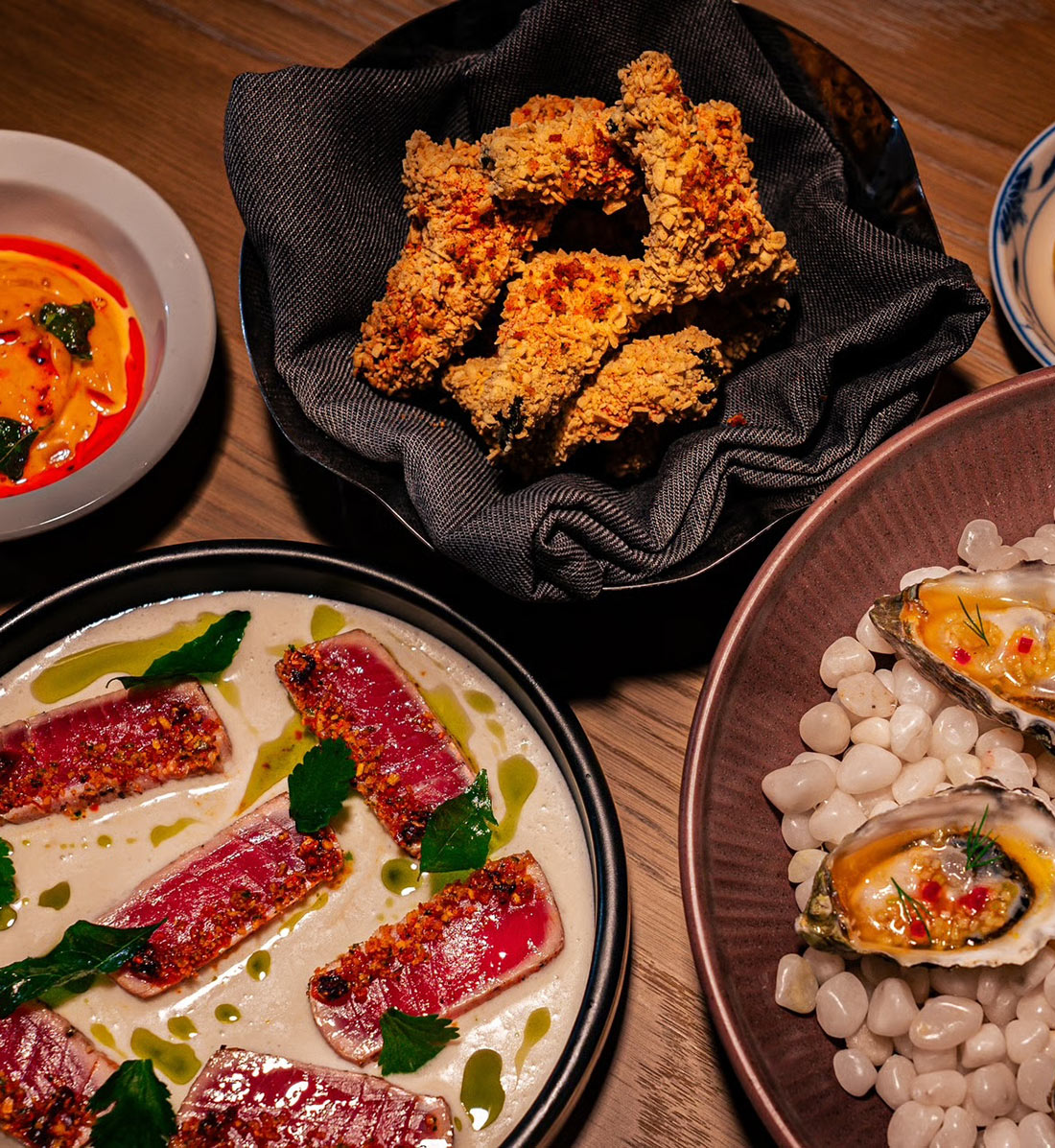In celebration of Gaggenau and The MICHELIN Guide’s ongoing partnership and commitment to the exploration of culinary culture, the Black Jacket Society of chefs converge ahead of each MICHELIN Guide Ceremony for dinner and conversation. Building off Gaggenau’s Professional Kitchen Principle that cooking equipment must be at the highest level akin to the ingredients chefs use in their dishes, the first dinner of 2024, held at Three MICHELIN Star and Green Star Quince in San Francisco, takes a deep dive into the California chefs' culinary and life philosophies.

The latest inductees—Michael Tusk, Jordan Kahn, and Josiah Citrin—continue to raise the bar on California’s fine dining scene, redefining the experience through unique vision coupled with mesmerizing flavors and ingredients. “When every element of the dining room is carefully considered, it adds layers of meaning to what’s presented on the plate,” shares Tusk. This sentiment is echoed by Kahn: “There is a transportive element to my restaurants,” says the chef who collaborates with artists, artisans, and designers on his spaces. “Creating an environment that pulls guests from their daily life is extraordinarily important to me.” It’s when the elements of design, gastronomy, and forward-thinkingness converge that cuisine is transformed. “From the lighting and sound design to the carefully selected furnishings, we strive to create spaces that are both visually stunning and inviting, fostering a sense of excitement and comfort for our guests,” adds Josiah Citrin who marries the fun of the experience with giving back to the community. Together, these chefs champion the best of California while putting their stamp on its cuisine with creativity, innovation, and the planet in mind.
Below, get to know the latest members of Gaggenau’s Black Jacket Society of Chefs who discuss their take on California’s dining scene, what they bring to their restaurants, and what drives them outside of the kitchen.

Chef Michael Tusk
Quince (Three MICHELIN Star and Green Star) and Cotogna
Spearheading one of only 33 restaurants globally to receive Three MICHELIN Stars and a MICHELIN Green Star, Michael Tusk has solidified himself as a pioneer and driving force in California’s rich culinary community. Outside the kitchen, Tusk can be found surveying his fields and livestock at Fresh Run Farm, snapping photographs of things he finds interesting, and mentoring the next generation of chefs.
It’s this sensibility that has led to Tusk to success with Quince: recently redesigned, Tusk worked with his wife Lindsay and artisan producers and purveyors to highlight California’s unique talents and vision.
What is your dining ethos?
Try not to take yourself too seriously and try to respect everyone in the dining room.
What are the key touchpoints of a memorable dining experience?
The most important bits are: Does the food taste delicious? Is the guest comfortable? And does the meal have a point of view?
Where is fine dining headed?
Because food and labor are getting even more expensive, fine dining restaurants will be pushed to do even more with less. Economic factors will require that fine dining restaurants get even more creative. I’m confident that fine dining will always be around, but it will evolve.
What are the personalities of your two restaurants?
Cotogna is more casual; Quince is a fine dining experience. But the two restaurants are linked by our relationship to Fresh Run Farm, and a shared commitment to materia prima.

What is the essence of California?
California is woven through the fabric of Quince and Cotogna. From the sugar pine in our outdoor dining parklet supplied by Evan Shively at Arborica in Marshall; to the gelato made with Peter Martinelli’s honeycomb; to the steak knives made by Everett Noel in the Sierra Foothills. We try to layer California into everything we do (without being too preachy).
When is it time to change something at your restaurants?
At the end of the day, I follow the guest reaction. If guests still love something then I can accept that I need to check my ego at the kitchen door.
What is a kitchen tool you can’t live without?
My first thought was… my hands. But if I can take those for granted, I’d say a mortar and pestle.
Tell us about your passion for photography and art.
Photography and art collecting inspire me daily. Seeing the work of others pushes me to create. The history of art is also an opportunity for staff training. It helps our teams to better understand the creative process in the kitchen.

What are the parallels between farming and cooking?
There are tons of parallels. They’re both labor-intensive. Neither is for the faint of heart, and both require extreme dedication. And in both cooking and farming, you get out what you put into it.
What is your advice to aspiring young chefs?
The virtue that I try to instill in young chefs is patience. Without patience, you won’t properly learn the craft. There are no quick fixes or shortcuts in this career. Becoming a better chef is earned through a series of experiences. The people who remember, consider, and learn from those experiences are more successful in the long run.
What is the best advice you've received?
Constantly taste. Taste, taste, and taste again.
What do you view as your legacy?
I view my role as a mentor. If I can continue to help teach a new generation of chefs—as I have for the last 21 years—it will count as a success. Our goal has always been to make San Francisco a better place to live. I hope that our restaurants have positively impacted our diners and our teams, and thereby improved our San Francisco community. Even just a bit. The world is vast. Serving people is an honest task, and I hope that it leaves a lasting impact.

Chef Jordan Kahn
Vespertine (Two MICHELIN Star and Green Star), Meteora (One MICHELIN Star), and Destroyer
It’s rare to find a chef whose work continues to rack up accolades, but Jordan Kahn exemplifies this with Meteora and Vespertine. Kahn’s ability to transport diners into his universe and out of the ordinary is his gift, and his restaurants the physical setting for his cohesive symphony—the architecture, music, and touchpoints are all hand-selected by him and worked on in collaboration with his wife Zara and local artisans.
At Vespertine, this translates into the meal and its progression: guests move from floor to floor as the dinner evolves while the plates start and finish with equal verve and flavor. With Meteora, a zero-waste ethos cemented by over 700 live plants elevating the experience with a (literally) green touch. For Kahn, setting the right tone engages all the senses, allowing for a deeper connection with the food.
What is your dining ethos?
[My wife] Zara has been a transformative force. She has a deeply intuitive nature that has greatly influenced the way I approach dining and eating, ultimately connecting me to how nutrition grounds us and is such a sacred element to our daily life.
What are the key touchpoints of a memorable dining experience?
It all comes back to connection. To truly open yourself up to the present moment and connect with yourself and others through the healing life-force energy of ingredients.
Where is fine dining headed?
We are truly living in the most magical time in history. The opportunity to create such amazing food experiences may not exist in the future. I feel tremendously grateful to be living in this moment in the world of gastronomy.

What is the essence of California?
The essence of California permeates our restaurants as the foundation of our work. The place holds greater significance than time. Today, I tasted a mango grown in the Mojave Desert that was salty. This place is magic.
When is it time to change something at your restaurants?
It's always a good time to make changes. Maintaining a constant flow of change and evolution helps to create a positive impact on both guests and staff.
What is a kitchen tool you can’t live without?
Curiosity.
Tell us about the menu.
The menu for Vespertine is written as a cohesive piece—more of an album than a compilation. Each of the compositions are part of a larger whole, based on a series of abstract sketches crafted in one sitting, during a visit to a jungle forest with my wife. The ingredients used are chosen for their unique relationship to the idea of a particular chapter in the album’s story. As the menu progresses, the ingredients draw you in deeper into the experience. Some are primal, some ethereal, and some appear otherworldly.

Tell us about your passion for fragrance.
I’m really excited about this, as I’ve been working on creating a fragrance myself for some time now. To me, scent is very ritualistic and creates a sense of place, so it was important for me to create something singular for Vespertine that you can only find there, but also evolves through time and the seasons. Currently the scent has deep earth and resin elements and features spices like black pepper and clove, along with exotic tree bark such as choya raal, and natural benzoin ambers to bridge the masculine and feminine.
What do you view as your legacy?
My hope is to help illuminate some of the wisdoms I have learned over my career which were so inspiring to me. They helped me find and tap into my essence, my purpose. We are an integral part of nature, not separate from it, so it's crucial that we understand the importance of our connection and relationship to our source. This connection is felt and experienced through food. Nutrition is the means through which we access nature.

Chef Josiah Citrin
Mélisse (Two MICHELIN Star), Citrin (One MICHELIN Star), Dear Jane’s
With seven distinct (and delicious) restaurants, Josiah Citrin makes sure his spots cater to guests with all palates. Exceptional ingredients coupled with passed-down cooking techniques result in mouthwatering cuisine with modern innovation. Under Citrin’s guidance, Mélisse activates all senses—initially through the food and then as guests savor their bites, through the visually stunning, cohesive, and inviting environment.
Creating a sense of comfort and home is paramount to Citrin as he is a leader in the Los Angeles culinary community often mentoring the next generation and honoring his son Augie’s legacy with his philanthropic efforts.
What is your dining ethos?
My dining ethos has evolved from a focus on showcasing intricate techniques and exotic ingredients to a more simplistic approach. I now believe that a truly memorable dining experience is achieved through a harmonious blend of exceptional flavors, thoughtful presentation, and a warm, inviting atmosphere. Less is more.
What are the key touchpoints of a memorable dining experience?
One quote that I live and breathe across our restaurants is “To receive a guest is to take charge of their happiness the entire time under your roof” (Fernand Point). A memorable dining experience is rooted in the belief that every guest is our responsibility. By paying meticulous attention to detail and ensuring that every aspect of their visit is thoughtfully considered and executed, we want it to be a great memory.

Where is fine dining headed?
Fine dining has undergone a remarkable transformation since my grandfather's era, when formal dining experiences often involved elaborate rituals and theatrical presentations. He would tell me about the grand restaurants, the chef slicing into a roasted leg of lamb right in front of the guests, table side. As the industry has evolved, we have witnessed a shift towards more casual and personalized dining experiences. Today, fine dining is increasingly defined by a focus on exceptional quality, innovative cuisine, and a commitment to creating memorable moments for guests.
What are the personalities of your restaurants?
Mélisse curates a meticulously orchestrated experience for our guests. From the carefully selected menu to the seamless flow of flavors, every aspect is designed to create a memorable culinary journey. The atmosphere is intimate and immersive, akin to a theatrical performance where the diners and chefs are all in one room.
Citrin offers a more personalized dining experience. While we maintain the same commitment to exceptional ingredients and techniques, we empower our guests to create their own culinary adventure by choosing the order and pace of their meal.
Dear Jane's offers a nostalgic nod to the continental fish houses of the 1970s.
What is the essence of California?
As a proud Californian, my passion for CA is reflected in every aspect of our restaurants. We prioritize locally sourced ingredients, from Santa Barbara spot prawns to Brandt beef, showcasing the bounty of California's agricultural landscape.
Tell us about your love for nostalgia.
Nostalgia permeates our kitchen. A 19th-century duck press from Maison Ericuisand a collection of hand-hammered copper pots, passed down from renowned chef Georges Vernotte, serve as tangible reminders of culinary traditions. My passion for ancient cooking techniques, such as slow braising meats in wine, cooking over live fire, poaching a whole turbot in its own juices in a turbotière reflects a deep appreciation for the timeless methods that have shaped the culinary world.

What is a kitchen tool you can’t live without?
A beautiful French tablespoon passed down from my grandmother's silver collection.
Tell us about your passion for surfing.
Both surfing and cooking bring me immense joy and fulfillment. The thrill of conquering a perfect wave and the satisfaction of crafting a delicious meal share that same profound sense of accomplishment. The exhilaration of riding a wave and the anticipation of slicing into a perfectly cooked steak evoke that same energy and feeling of conquering nature and showing off your mastery of the elements.
Tell us about your philanthropic efforts.
One of the most meaningful ways to honor my son, Augie, is through the philanthropic endeavors made possible by Augie’s on Main and my other restaurants. By leveraging our culinary talents to raise funds and support organizations like Stop the Void, we aim to continue the legacy of compassion and community involvement that Augie was so passionate about during his lifetime.
What do you view as your legacy?
I aspire to be remembered as a chef who not only created exceptional dining experiences but also made a positive impact on the culinary community here in LA. My goal is to mentor future generations of chefs, champion sustainable practices, and contribute to the ongoing evolution of fine dining. By fostering a culture of innovation, collaboration, and giving back, I hope to leave a lasting legacy that inspires and elevates the culinary world.
All images courtesy of Adahlia Cole Photography and Colin Peck









